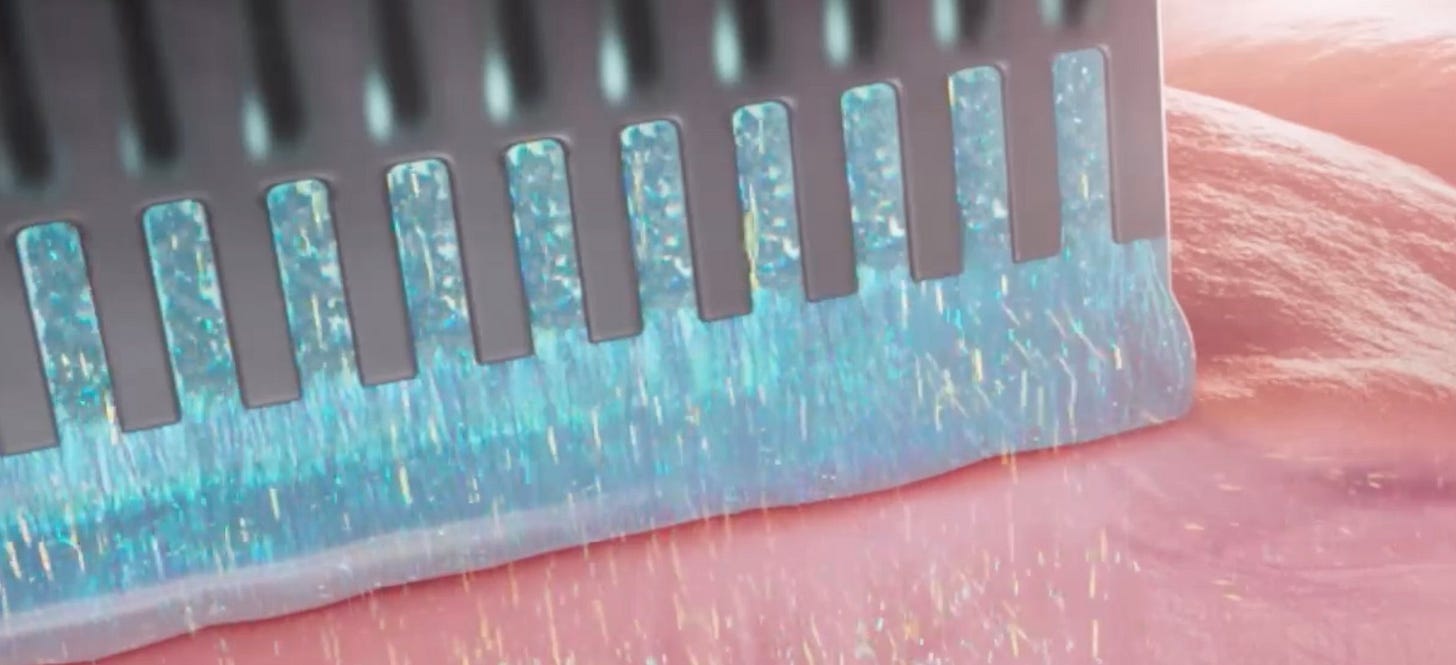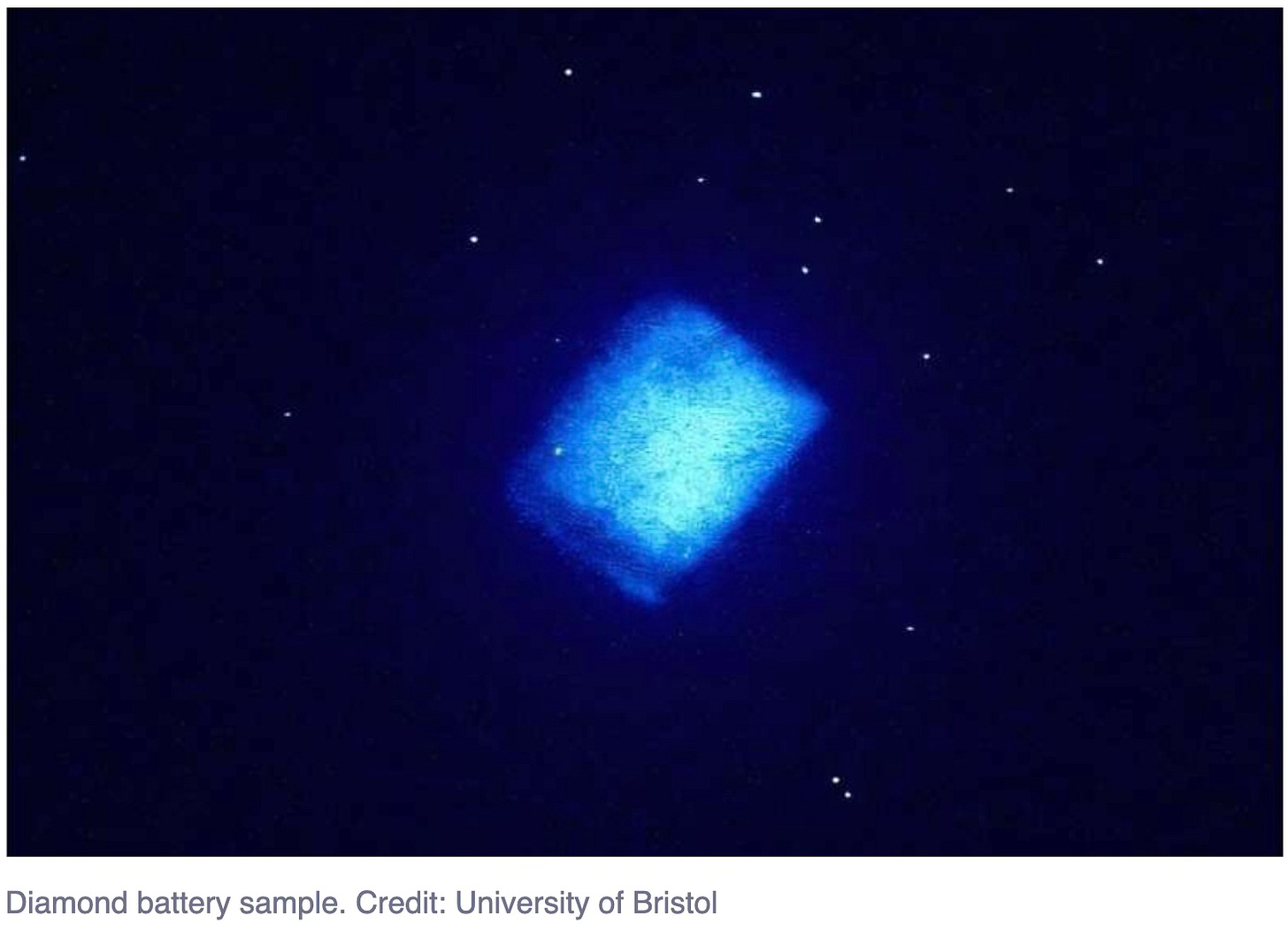This week we examine a new approach to a brain-computer interface that is less invasive and does less damage to the brain when implanted. We investigate a new method to double the resolution of radar using current equipment. We also discover two new types of batteries, one based upon Carbon-14 and the other on Protons.
Brain Computer Interfaces
There are a number of companies working on Brain Computer Interfaces. We have spoken before about Australian startup, Synchron and Elon Musk’s company Neuralink which have made significant progress in developing interfaces that allow direct inputs into the brain. US based Science Corporation has now developed a slightly different approach to interfacing with the brain.
Science Corp have developed a honeycomb like structure with 100,000 tiny wells or cylindrical holes 15 micrometers deep. Individual neurons grow from stem cells in each well and then directly into the subjects brain. When placed on the brain’s surface the neural stem cells grow axions and dendrites downward into the brain tissue. As these biological “roots” grow into the brain they naturally integrate and form synaptic connections. These connections provide the bridge between the brain and an external machine without damage to the brain.
This new approach provides up to 10,000 times more bandwidth than the Neuralink approach. In experiments with mice, the mice could detect and respond to light signals transmitted through the device which indicates a successful integration between the device and the animal’s brain.
In the near term the device is likely to be useful for patients with diseases such as ALS to enable them to communicate It may enable paralysed individuals to control computer cursors and facilitate rehabilitation for stroke victims. Long term, some predict that we will be able to think and google, record everything that we see and do and possibly enhance our problem solving via AI assistants working directly in our brains. We are some way away from working devices however this is a massive step forward.
Doubling Radar Resolution
A team from Daegu Gyeongbuk Institute of Science and Technology in Korea have developed a new radar signal processing technology that can dramatically enhance the resolution of existing low resolution radar. The tech enables precise object recognition using existing hardware without the need for bandwidth expansion.
Current approaches to enhancing radar images use large amounts of bandwidth or complex high resolution algorithms. This results in higher cost and system complexity. The team was able to find additional information in the envelope of radar signals that allowed the development of an algorithm that analyzes the contour features of received signals. This provides improved object differentiation without any increase in bandwidth needs or new hardware.
This new application will be useful for automotive systems and aerospace applications. Self driving vehicles will be better able to distinguish between objects such as pedestrians, cyclists or other vehicles.
In industrial settings better object recognition and machinery monitoring will improve performance of automated robotics.
Carbon-14 Diamond Battery
A team at the University of Bristol and the United Kingdom Atomic Energy Authority (UKAEA) have created the first carbon-14 diamond battery. Carbon-14 is a radioactive isotope that is used in radiocarbon dating. The battery works by using the radioactive decay of carbon-14 to generate low levels of power. The battery works in a similar way to solar panels however instead of using light particles the battery captures fast moving electrons within the diamond structure.
The half life of Carbon-14 is 5,700 years allowing the battery to be ultra long lasting. Diamond batteries are a safe and sustainable way to provide continuous microwatt levels of power. The team built a plasma deposition rig to grow the diamond which encased a small amount of carbon-14. The development came out of the UKAEA work on fusion energy
The battery may be suitable for medical devices such as ocular implants, hearing aids and pacemakers and thus removing the need for battery replacement. The battery will also work in extreme environments on earth and in space. Applications such as security devices and radio frequency tags could be powered for decades at a time.
Proton Battery
Whilst we are talking about batteries, a team from the University of New South Wales have developed an organic material that is able to store protons. They have used this material to create a rechargeable proton battery.
The material, tetraaminio benzoquinone (TABQ) is able to support rapid proton movement using hydrogen bond networks. The battery works at room temperature and at sub-zero freezing temperatures.
Proton batteries may be a substitute for the lithium ion batteries that so many of our devices currently rely on for charge. Protons have the smallest ionic radius and mass of all elements. This allows them to diffuse quickly. Proton batteries have high energy and power density in addition to being relatively inexpensive and fast charging.
Combined with a TCBQ (TetraChloro benzoquinone) cathode, the all organic battery offers 3,500 cycles of fully charging and draining the battery. Lithium-ion batteries use lithium-salt as a solvent, which is flammable and therefore problematic. The proton battery uses water between both organic electrodes making the prototype lightweight, safe and affordable.
There is potential for the batteries to be scaled up for grid scale electricity storage and other larger applications. The team have designed a very good anode. Future work will concentrate on the cathode side which the team hopes will increase the battery output voltage. Additionally molecular hydrogen (H2) is very reactive and difficult to store and transport. Hydrogen protons (H+) are stable. This material might be able to be used to store and easily ship H+ around the world. The hydrogen would be able to be extracted when and where it is needed.
Paying it Forward
If you have a start-up or know of a start-up that has a product ready for market please let me know. I would be happy to have a look and feature the startup in this newsletter. Also if any startups need introductions please get in touch and I will help where I can.
If you have any questions or comments please comment below.
I would also appreciate it if you could forward this newsletter to anyone that you think might be interested or provide a recommendation on Substack.




